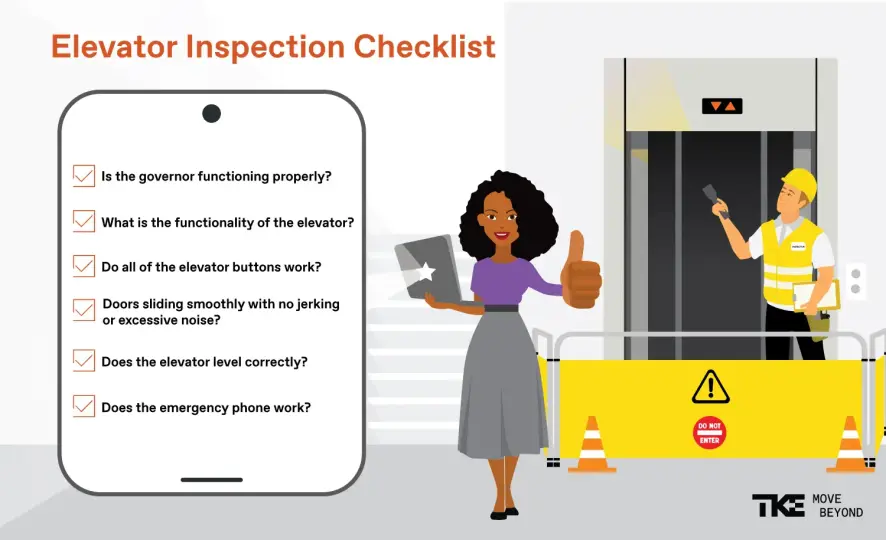While the requirements for elevator inspections vary from country to country, there are common areas that are typically included. As with any piece of complex machinery, an elevator requires constant elevator maintenance and professional elevator repair. In many jurisdictions additional government mandated safety inspections are carried out. This can be a stressor for several reasons: one, if it is the initial inspection of a new elevator, a failure could mean delaying the opening of a building.
If the elevator is currently in service and fails the inspection, this could result in the shutdown of the elevator which is not only inconvenient but could lead to costly repairs. The good news is that with proper planning and proper service, neither one of these nightmare scenarios needs to take place. This article highlights several of the common items examined during an inspection along with tips to ensure that the elevator passes on the first try.
Initial Elevator Inspection
In many countries an initial elevator inspection is required when an elevator is first installed. During this inspection, not only will the safety and functionality of the elevator be put to the test, but also the overall safety/quality of the shaft (hoistway) and the equipment in the lobby of each landing.

Safety and Functionality of the Elevator
Despite what Hollywood would have you believe, elevators are quite safe due in large part to the numerous safety features installed on every unit. During the initial inspection, the inspector will have the elevator mechanic put the safety features to the test. This includes tripping the governor — a device designed to stop the elevator if it begins to travel too quickly — and testing the door clutch, which keeps the door closed when not safely leveled at the appropriate landing.
Several of these tests are conducted with test weights in the elevator cab typically ranging from 125% to 150% of its rated maximum capacity. This confirms that all the safety features will function when the car is completely full of passengers. The inspector will usually also check the functionality of the elevator: do all of the buttons work? Are the doors sliding smoothly with no jerking or excessive noise? Does the elevator level correctly? Does the emergency phone work?
Safety and Functionality of the Hoistway and Lobby
During the initial inspection, an inspector will also carefully check the safety and quality of the hoistway and lobby. The inspector will ride on top of the elevator and confirm that all gaps in the walls have been correctly fire-stopped. They will also make sure that there is sufficient refuge space above and below the elevator for a mechanic. The inspector will also check the functionality of the smoke detectors in the hoistway and lobbies to confirm that they cause the elevator to perform specific functions in case a fire starts in the building. Finally, the inspector will check for proper lighting in the lobbies and machine room, for any trip hazards, and for any obstacles to egress from the elevator to the outside.
Annual and Recurring Elevator Inspections
In many countries an annual, or a recurring elevator inspection is required. During an annual inspection, the inspector will once again test all the safety features of the elevator such as counterweight safeties, governors, oil buffers and car door closing force. During a routine inspection the breaks and other critical parts will be tested. The inspector will also carefully check the elevator cables (ropes) for wear and tear and signs of fraying, rubbing or weakness.
Setting Up for Success
Did you ever have a teacher that gave you all the answers to the test to study? The great part about an elevator inspection is that we already know what the inspector will be looking for — we just need to “study” or prepare for the test. During the installation of a new TK Elevator, the mechanic, superintendent or operations manager will provide the general contractor with a pre-inspection checklist. This list, while not fool-proof, will eliminate the vast majority of items that commonly cause an inspection to fail.
If TK Elevator is servicing the elevator, the service mechanic performs maintenance on the equipment during each visit to ensure that the equipment is functioning properly on inspection day. By following the guide of the pre-inspection checklist and using TK Elevator for service, you have “studied for the test” and are ready for inspection. The bottom line is that with proper planning and maintenance, an elevator inspection does not have to be something to strike fear into your heart.
 Canada
Canada

